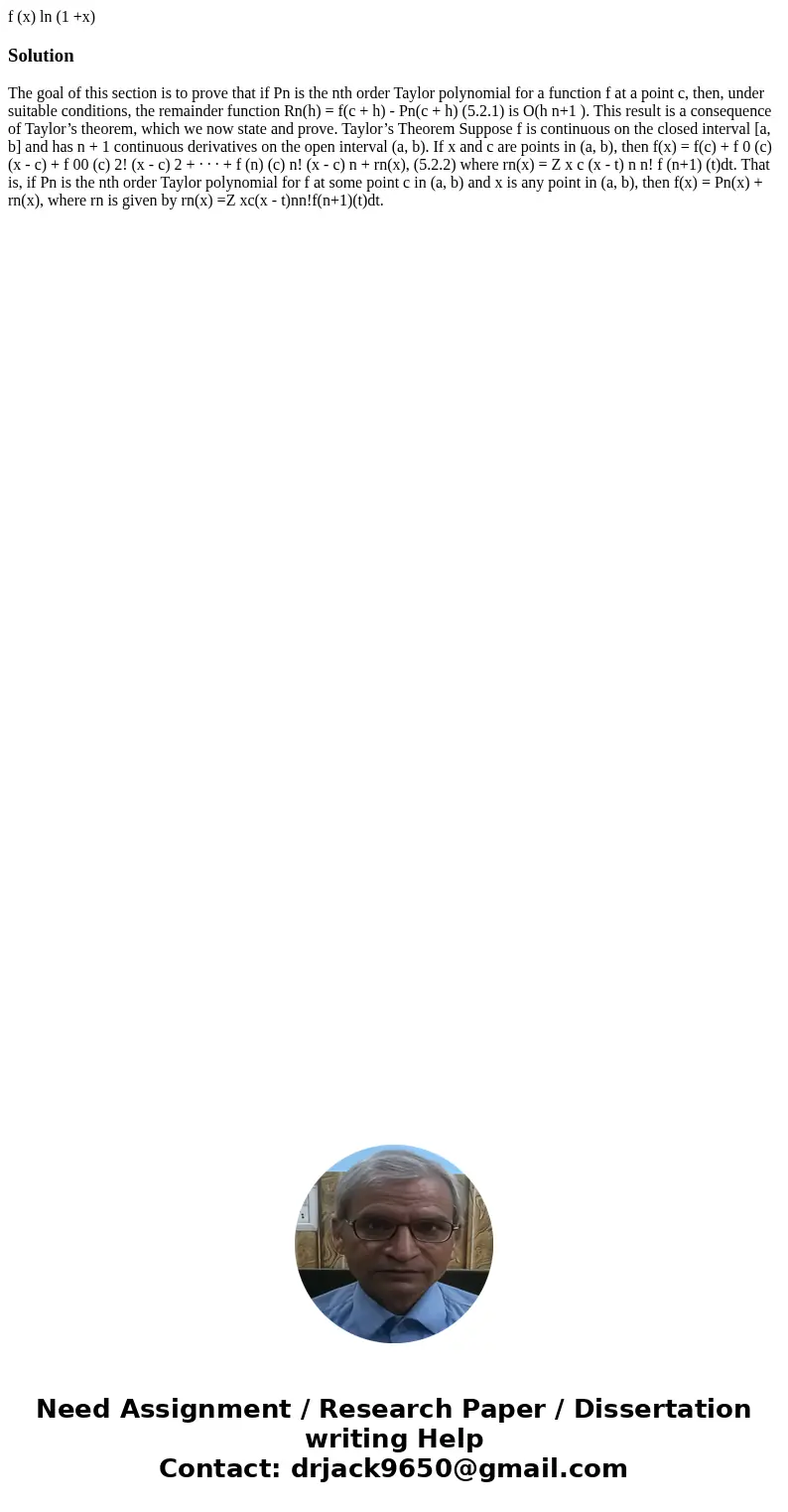f x ln 1 x Solution The goal of this section is to prove tha
f (x) ln (1 +x) 
Solution
The goal of this section is to prove that if Pn is the nth order Taylor polynomial for a function f at a point c, then, under suitable conditions, the remainder function Rn(h) = f(c + h) - Pn(c + h) (5.2.1) is O(h n+1 ). This result is a consequence of Taylor’s theorem, which we now state and prove. Taylor’s Theorem Suppose f is continuous on the closed interval [a, b] and has n + 1 continuous derivatives on the open interval (a, b). If x and c are points in (a, b), then f(x) = f(c) + f 0 (c)(x - c) + f 00 (c) 2! (x - c) 2 + · · · + f (n) (c) n! (x - c) n + rn(x), (5.2.2) where rn(x) = Z x c (x - t) n n! f (n+1) (t)dt. That is, if Pn is the nth order Taylor polynomial for f at some point c in (a, b) and x is any point in (a, b), then f(x) = Pn(x) + rn(x), where rn is given by rn(x) =Z xc(x - t)nn!f(n+1)(t)dt.
 Homework Sourse
Homework Sourse